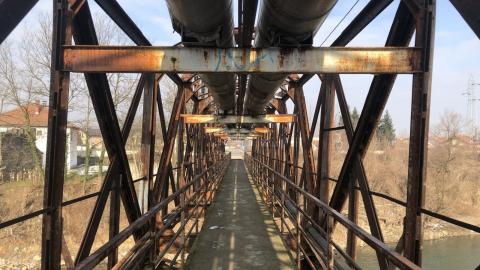Forgotten Victims: The Story of Bosnia’s Iron Bridge Executions

"Each time after a person had been taken out, I heard a volley of fire or a single shot," Salkic said.
He recalled that it was raining heavily when he approached the bridge, where he saw police officers in blue uniforms and soldiers in olive-grey Yugoslav People's Army uniforms, as well as members of a unit called the Red Berets.
"There was a big hole between the iron railings [of the bridge], so you would fall right away after being shot. The Bosna was a big river. They brought me to the bridge. I was ordered to go to the other side. They said I would stay alive if I crossed over to the 'Balijas' [derogatory term for Bosniak troops from the Bosnian Army who held positions on the other side of the bridge]," Salkic explained.
"I do not know how many metres I went before they began shooting. I crawled to the end of the bridge. When I stood up, a bullet hit me above my right ear. I jumped to the right. When I saw them walk across the bridge with a flashlight, I hid in the grass," he continued.
He was there with other residents of the village of Jablanica, near the town of Maglaj in northern Bosnia, who were first taken to military detention camps in the Doboj area and then shot on the bridge.
No final verdicts have yet been handed down in Bosnia and Herzegovina for the murders on Zeljezni Most in June 1992 of 13 captives - the number of victims that witnesses say were killed.
Salkic said that he was in "the first of three groups" of people who were taken from hangars formerly used by the Yugoslav People's Army in Usora near Doboj to Zeljezni Most in the Doboj suburbs in order to be shot.
"The bodies of my three neighbours from the first group have still not been found," Salkic said.
On the night of the shooting,...
- Log in to post comments
